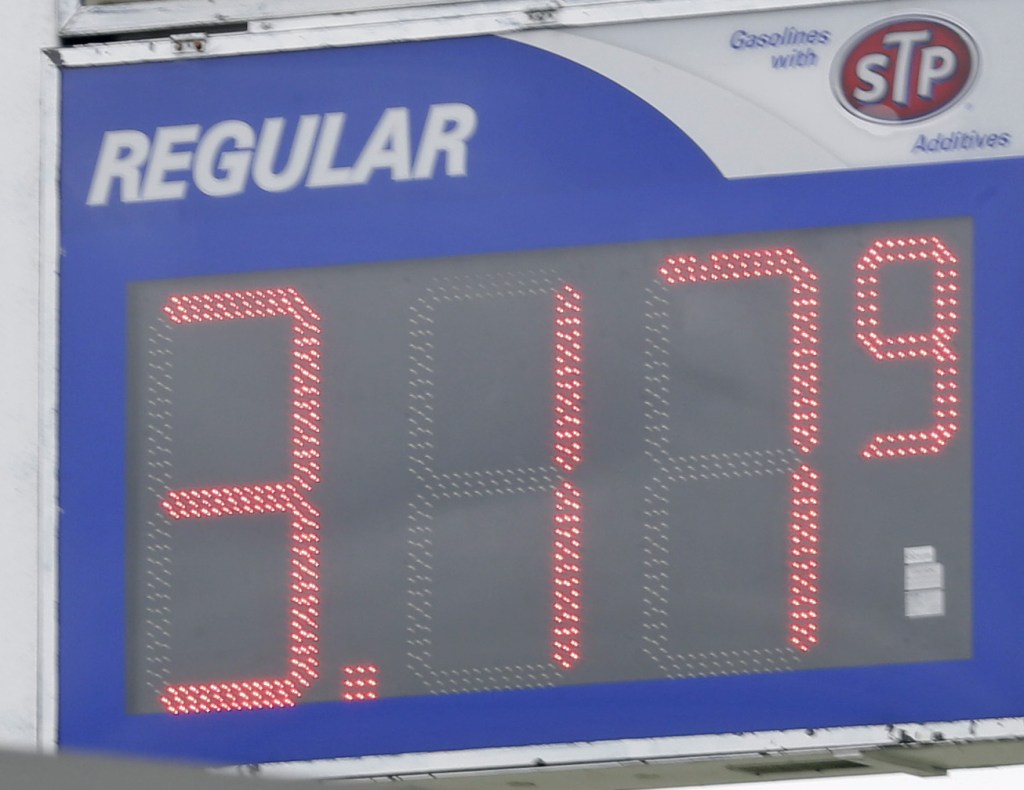NEW YORK — Local gasoline prices are swinging up and down ever more drastically, a result of a national fuel system that is operating with a shrinking margin for error.
Jumps of 20 cents per gallon or more in a single day are becoming more common, for example, according to an AP analysis of daily and weekly price changes at 120,000 U.S. gasoline stations tracked by GasBuddy.com.
Sixty-three times this year at least one U.S. metro area has seen such a change. Like the 24-cent increase Decatur, Ill., drivers saw on Jan. 26, or the 24-cent increase in Superior, Wis., on April 30, and the 28-cent increase in Henderson, Ky., on Sept. 19.
Not since 2008 have there been so many 20-cent changes. Last year those happened 58 times. In 2011, they happened just 21 times, and in 2010 just 7 times.
“There’s more and more feast or famine,” says Tom Kloza, chief oil analyst at the Oil Price Information Service and GasBuddy.com.
The problem, analysts say, is a fuel system increasingly vulnerable to short-term shocks. That’s because refiners try to keep stocks of gasoline low to save money, just as other manufacturers aim to operate on a “just-in-time” inventory schedule. The nation has about 26 days’ worth of gasoline demand in storage, compared with 30 to 40 days’ worth during much of the 1980s and 1990s, according to the Energy Department. Also, there are 143 operating refineries, about half the total from 1980, so, if one has a problem, supplies quickly drop.
That price whiplash has a cost. Spikes in gasoline prices are more damaging to the economy than a slow rise in prices because they undermine consumer confidence, economists say. Drivers may be pleasantly surprised when prices slide lower, as they have recently – the national average is at $3.28, its lowest level of the year. But they don’t know when the price might bounce back up, and increases are almost always sharper than decreases. That makes it harder to budget for the daily commute, or know whether dinner out or a new appliance will be affordable.
These dramatic local price swings are happening despite relatively stable oil prices and a national average gasoline price that has hovered around $3.50 per gallon for three years. In 2008, the last time local prices were this volatile, oil spiked to $145 a barrel in July, then plunged below $40 in late December as the global financial crisis sent energy markets reeling. The national average gasoline price ranged from $1.62 to $4.11 a gallon.
Nowhere is it more frustrating to buy gas than in Kokomo, Ind., a flat, unassuming blue collar city surrounded by farmland 45 miles north of Indianapolis that regularly sees 10-cent or 20-cent price changes in a single day. On average, the price changes 5 cents there every day and 16 cents every week, the highest in the nation, according to GasBuddy.com.
Gas station owners set their prices based on how much it cost to buy the last shipment of wholesale gasoline, how much the next shipment will cost, and what competitors are doing. Stations typically make very little on gasoline, because they set the price as low as possible to attract people into their more profitable convenience stores.
The price they pay for wholesale gasoline is determined by deals between refiners and distributors that are usually based on benchmarks set on exchanges, such as the New York Mercantile Exchange.
Send questions/comments to the editors.



Success. Please wait for the page to reload. If the page does not reload within 5 seconds, please refresh the page.
Enter your email and password to access comments.
Hi, to comment on stories you must . This profile is in addition to your subscription and website login.
Already have a commenting profile? .
Invalid username/password.
Please check your email to confirm and complete your registration.
Only subscribers are eligible to post comments. Please subscribe or login first for digital access. Here’s why.
Use the form below to reset your password. When you've submitted your account email, we will send an email with a reset code.